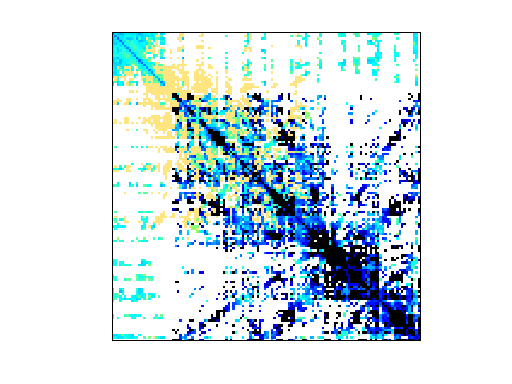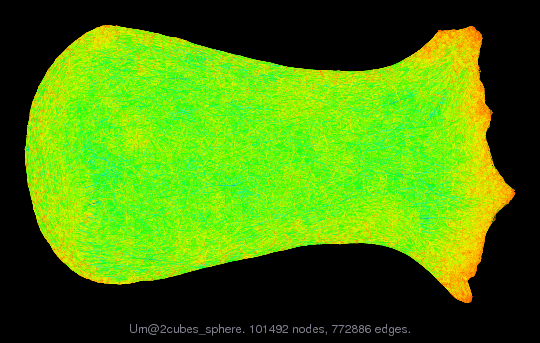Um/2cubes_sphere
FEM, electromagnetics, 2 cubes in a sphere. Evan Um, Geophysics, Stanford
| Name |
2cubes_sphere |
| Group |
Um |
| Matrix ID |
1919 |
|
Num Rows
|
101,492 |
|
Num Cols
|
101,492 |
|
Nonzeros
|
1,647,264 |
|
Pattern Entries
|
1,647,264 |
|
Kind
|
Electromagnetics Problem |
|
Symmetric
|
Yes |
|
Date
|
2008 |
|
Author
|
E. Um |
|
Editor
|
T. Davis |
| Structural Rank |
101,492 |
| Structural Rank Full |
true |
|
Num Dmperm Blocks
|
1 |
|
Strongly Connect Components
|
1 |
|
Num Explicit Zeros
|
0 |
|
Pattern Symmetry
|
100% |
|
Numeric Symmetry
|
100% |
|
Cholesky Candidate
|
yes |
|
Positive Definite
|
yes |
|
Type
|
real |
| Download |
MATLAB
Rutherford Boeing
Matrix Market
|
| Notes |
A matrix from Evan Um, Geophysics, Stanford. Studying finite-element
time domain solvers for electromagnetic diffusion equations. The 3-D
computational domain consists of 88,213 tetrahedral elements. The
computational domain consists of the two parts. First, there are two
300m x 300m x 150m boxes where a fine mesh is used. Second, the two
boxes are enclosed by a large sphere whose radius is 10 km. An element
growth factor is used to increase the mesh size gradually inside the
sphere. This is because absorbing boundary conditions are not very
good choices for these problems. The finite element technique is
edge-based rather than node-based. Therefore, the unknowns are
amplitudes of electromagnetic fields on an edge of each element.
|

